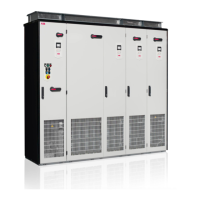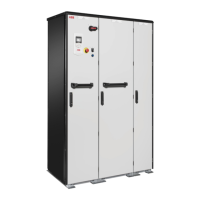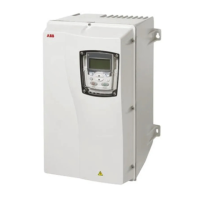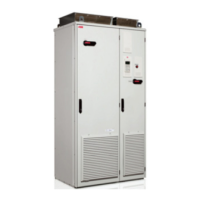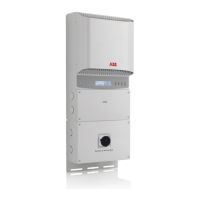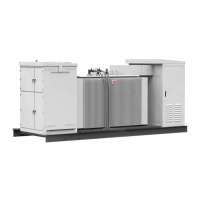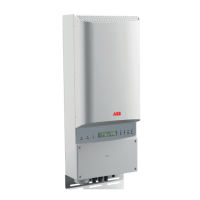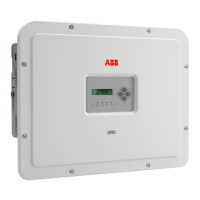Program features 69
The master drive is typically speed-controlled and the other drives follow its torque or
speed reference. In general, a follower should be
• torque-controlled when the motor shafts of the master and the follower are rigidly
coupled by gearing, chain etc. so that no speed difference between the drives is
possible
• speed-controlled when the motor shafts of the master and the follower are flexibly
coupled so that a slight speed difference is possible. When both the master and
the follower are speed-controlled, drooping is also typically used (see parameter
25.08 Drooping rate). The distribution of load between the master and follower
can alternatively be adjusted as described under Load share function with a
speed-controlled follower below.
Note: With a speed-controlled follower (without load sharing), pay attention to the
acceleration and deceleration ramp times of the follower. If the ramp times are set
longer than in the master, the follower will follow its own acceleration/deceleration
ramp times rather than those from the master. In general, it is recommended to set
identical ramp times in both the master and the follower(s). Any ramp shape settings
(see parameters 23.16…23.19) should only be applied in the master.
In some applications, both speed control and torque control of the follower are
required. In those cases, the operating mode can be switched by parameter (19.12
Ext1 control mode or 19.14 Ext2 control mode). Another method is to set one external
control location to speed control mode, the other to torque control mode. Then, a
digital input of the follower can be used to switch between the control locations. See
chapter Control locations and operating modes (page 23).
With torque control, follower parameter 26.15 Load share can be used to scale the
incoming torque reference for optimal load sharing between the master and the
follower. Some torque-controlled follower applications, eg. where the torque is very
low, or very low speed operation is required, may require encoder feedback.
If a drive needs to quickly switch between master and follower statuses, one user
parameter set (see page 126) can be saved with the master settings, another with the
follower settings. The suitable settings can then be activated using eg. digital inputs.
Load share function with a speed-controlled follower
Load sharing between the master and a speed-controlled follower can be used in
various applications. The load share function is implemented by fine-tuning the
follower speed reference with an additional trim signal based on a torque reference.
The torque reference is selected by parameter 23.42 Follower speed corr torq source
(by default, reference 2 received from the master). Load share is adjusted by
parameter 26.15 Load share and activated by the source selected by 23.40 Follower
speed correction enable. Parameter 23.41 Follower speed correction gain provides a
gain adjustment for the speed correction. The final correction signal added to the
speed reference is shown by 23.39 Follower speed correction out. See the block
diagram on page 649.
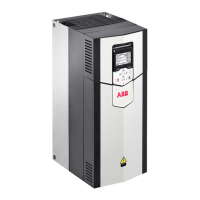
